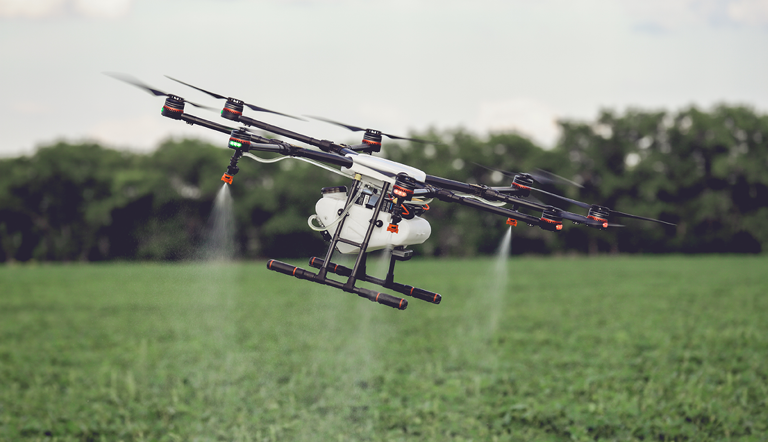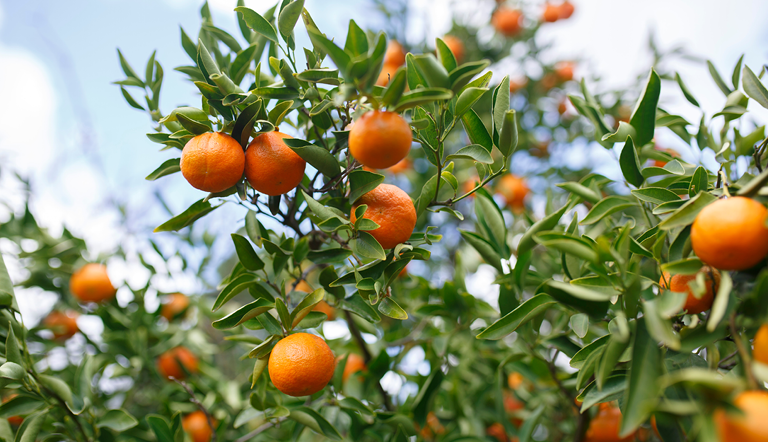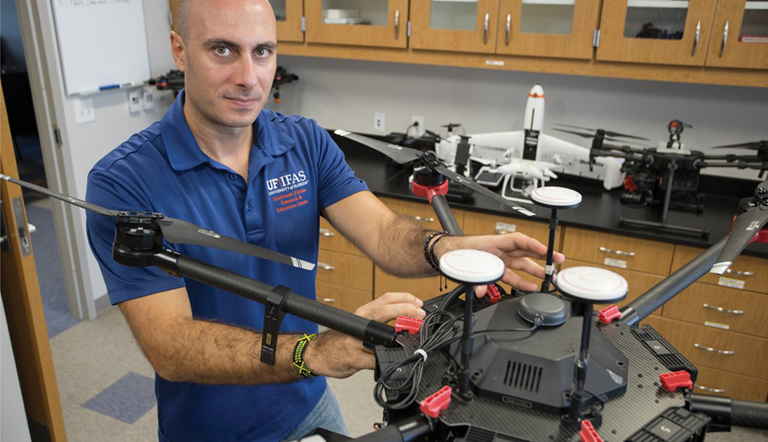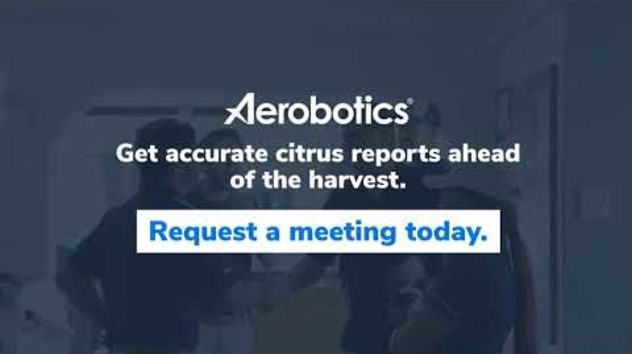
Drone Farming: Predicting Yields For Citrus Growers

From the USA to South Africa, South America to Australia, growers are using artificial intelligence supplied by drones for crop estimates in citrus fruit farming. And a South African company is one of those leading the charge.
The traditional method involves counting fruit from randomly selected citrus trees and using mathematical models to predict crop yield per hectare or per block. This is time consuming and labour intensive. For a number of years, researchers have been looking at ways to use imaging to speed up the process and make it more accurate.
A snapshot of the research
In 2007, Japanese researchers published their paper, “Prediction of citrus yield from airborne hyperspectral imagery”. They noted “tremendous fluctuations in yield from year to year” (alternate yield bearing) as well as fruit quality. As citrus is Japan’s most important fruit crop, “a method to estimate or predict the yields of citrus on individual trees at least 6 months ahead of their harvest season [was] needed”.
The researchers developed yield prediction models for individual trees exhibiting alternate bearing based on canopy features they’d obtained from airborne hyperspectral imagery. Foreshadowing precision farming and the use of drones in citrus farming, this imagery was recorded from an aeroplane flying 1 000m above the ground.
The first time a drone fixed with a camera was documented in agricultural research was in 1985. By 2013, the Australian Almond Board had used drones for crop estimation.
In the early days, separation of the fruit from the background in images posed problems and frequently rendered the exercise inaccurate. But by 2016, computer scientists in Turkey had perfected a method of segmenting images of trees that offered a better means of estimating citrus fruit yield. When compared to “ground truth”, the technique was found to have an accuracy of 91.3%. This despite changing light conditions, the obstruction of leaves or other oranges, and differences in the colour of the fruit at different times in the maturation cycle.
In the same year, the US Federal Aviation Administration relaxed the rules covering “small unmanned aerial vehicles”. This opened up options for the commercial use of agriculture drones.
Enter the robots
The accuracy of using images for yield prediction had been proved (and improved). It was only a matter of time before it was combined with the application of drones in agriculture.
Won Suk Lee is an agricultural and biological engineering professor who has been studying the use of images for yield prediction and disease, as well as the agricultural possibilities offered by robots, since the early 2000s. His first citrus yield mapping paper was published in 2003. In 2006, he was part of a research group investigating “Remotely-piloted helicopter citrus yield map estimation”. And by 2019, his imaging technology and algorithms could detect even immature citrus under different light conditions and even if obscured.
While Lee was working on developing a vision system to be carried on an autonomous field robot, his colleague at the UF/IFAS Southwest Florida Research and Education Center was looking at UAV (drone) applications to help citrus farmers increase crop yield.
In 2019, Yiannis Ampatzidis and his team successfully attached an imaging mechanism to a drone that could leverage artificial intelligence to accurately detect and count citrus trees, “the very first step toward developing an individual tree analysis”. The system was able to evaluate citrus varieties and rootstocks, identifying those that produced healthier, tasty fruit and higher crop yields.
At the time, researchers noted the possibility that this technology could also be used to diagnose stress, pest infestations and diseases.
In 2021 Ampatzidis and his team presented a study on citrus yield prediction to the American Society of Agricultural and Biological Engineers. Their artificial-intelligence system, Agroview, combines satellite and drone-supplied multispectral images with colour data gathered on the ground. It is able to assess stress, categorise trees based on canopy and height, and estimate plant nutrient content. Tests during the 2019-2020 harvest season were also able to predict citrus yield per hectare with incredible accuracy.
Learn more about Agroview:
But a South African company, Aerobotics, had already successfully launched its Citrus Yield Estimation product after trials with top citrus farms in South Africa and the USA. The result was crop yield estimates with up to 95% accuracy - an important improvement on the 75-85% accuracy obtained from manual counts.
Used throughout the season, this technology allows farmers to plan better based on more accurate predictions of size and colour to be expected at harvest, as well as quantity. While of immense importance to farmers, this is also vital information for packing plants, exporters and marketers, too.
Aerobotics also offers a monitoring system that gives growers real-time, in-field reports on pests and disease. This allows them to take effective action as soon as there’s a problem and target protection at the exact area concerned. Insight into nutrient deficiencies and irrigation issues is also supplied. And of course, it can accurately count the number of trees in each block by crop or cultivar.
More about Aerobotics
Aerobotics is a tech company founded by James Paterson and Benji Meltzer in 2014. It now has head offices in Cape Town and California and operates in 18 countries across North and South America, Europe, Africa and Australasia.
The team consists of agronomists, engineers, product developers, creatives and customer service experts. To date, their software has processed more than 100-million trees. It has detected and sized over a million citrus fruits, helping growers and investors make data-driven decisions to improve their crop production and profitability.
Multispectral cameras on drones, thermal imaging and satellite imagery are combined to produce extremely detailed, high-resolution images. Insights take three to seven days depending on the crop, number of acres or hectares flown and internet speed.
“Drones collect all that data across the farm, and we process it to build a digital model of each plant, enabling us to identify and track that plant over time: its size, how it’s growing, as well as the transpiration, fruit count, and fruit size,” James told AgFunder Network.
“With this data, we can tell the farmer [about] fruit size and count, and also whether there are limitations that they could correct to get a higher yield — with their soil or nutrition program, for example — or if there is disease.
“The goal is to help farmers optimise and secure their production and yields. First, we identify where they are getting subpar yields or subpar performance, then we work with farmers to fix those problems and track over time how they are improving.”
Aerobotics provides users with a PC/laptop-based personal planning and monitoring dashboard called Aeroview. Here they can view imagery and access analytics and reports. Yield prediction is currently confined to citrus. Tree Insights can supply information across a range of crops, including olives, stone and subtropical fruit, nuts, pome fruits (apples, pears etc) and pomegranates, berries and grapes, as well as citrus.
Watch this video about the Aerobotics system for citrus growers:
Aerobotics’s Yield Estimation product offers:
- accurate reports on fruit size distribution to be expected at harvest date
- fruit size distribution charts and fruit colour reports from flight dates and throughout the season
- alerts to stressed trees and zones
- tree census and missing tree counts
- pre-tree analytics including chlorophyll index, NDVI, volume, canopy area

Why is yield prediction important?
Systems like the Yield Estimation service developed by Aerobotics are helping growers, packers, exporters and marketers to plan better. Armed with early-season production rate predictions, thanks to more accurate crop yield data and information on real-time crop health, they can make the decisions that enable them to be more competitive in a global market.
The technology enables growers to make interventions to decrease risk, lower their costs, prepare more accurately for harvest and increase profits.
So I can pack away my drone after harvest?
No! This is the time when citrus (and other crops) are most responsive to nutrient intake and fertiliser application is critical. Attending to unhealthy trees is vital for root growth even during winter.
Aerial imagery can help farmers determine exactly where and when to apply fertiliser, and facilitate the identification of stressed trees. Systems like those provided by Aerobotics deliver insights on each tree and block. This means that farmers can take action based on these insights.
Information on canopy area and tree volume also makes selective pruning easier.
And, of course, the use of drones in agriculture extends far beyond yield prediction. Watch this space…
Find out about ADAMA’s complete crop protection for citrus here.

